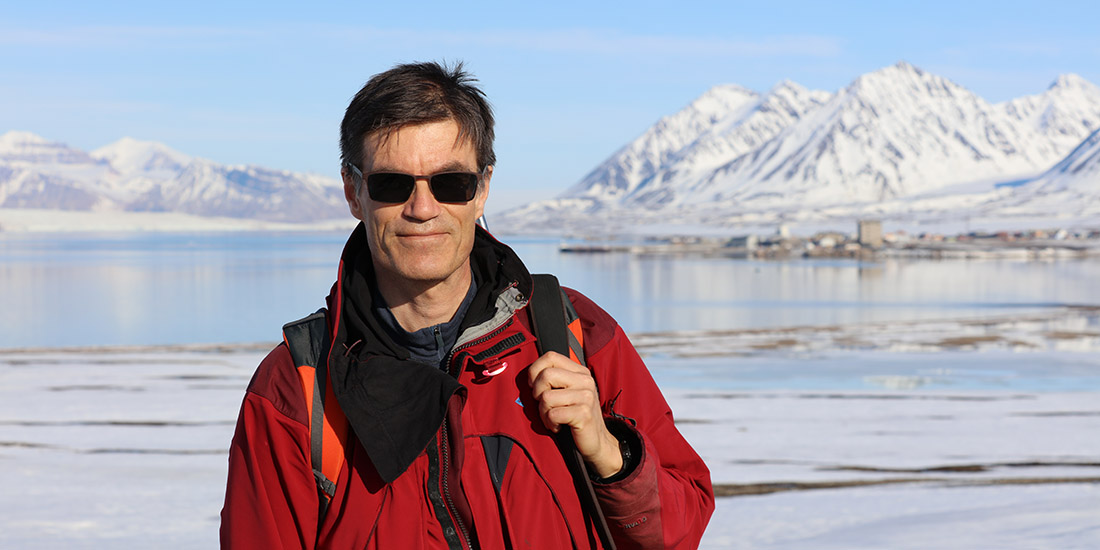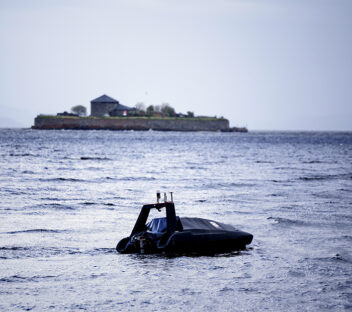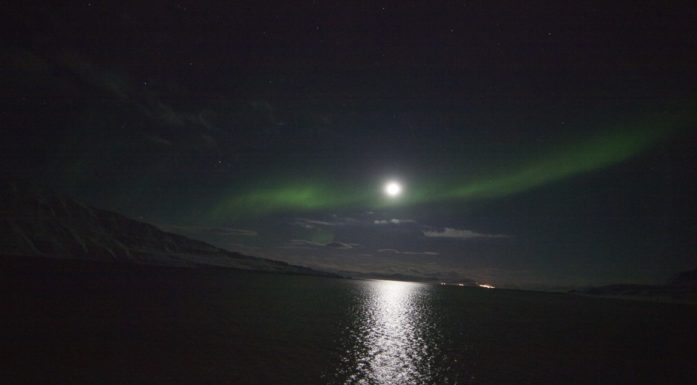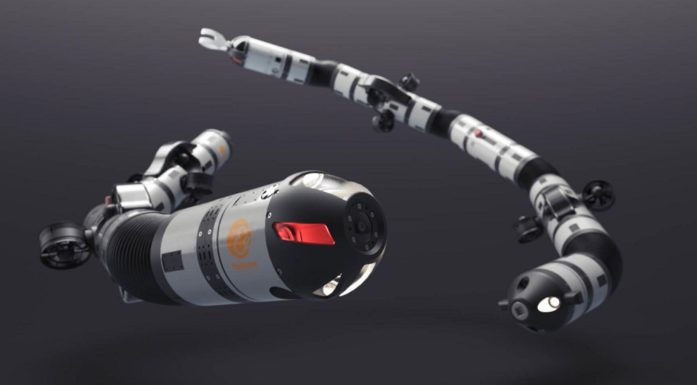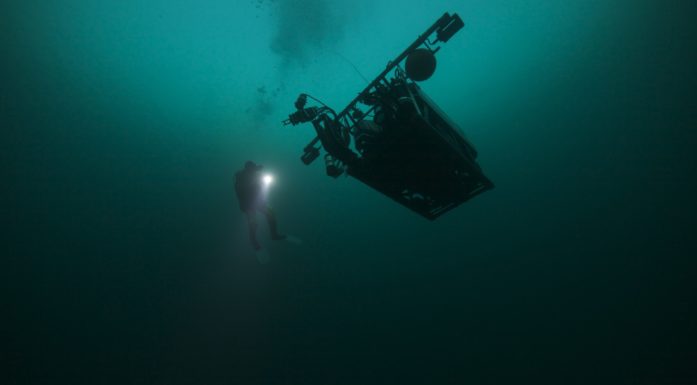A paradigm in conducting hazardous and innovative basic research
NTNU Amos is an expansive ocean research and innovation community that’s composed of both highly honed specialist expertise and an incredibly broad scope of knowledge. It also adheres to a popular Norwegian football strategy: Develop talents by allowing them to do what they do best – and playing to each other’s strengths.
NTNU Amos is the Centre for Autonomous Marine Operations and Systems. Amos has recently reached its tenth year of activity as a Centre of Excellence (CoE). The CoE scheme was established 20 years ago, and the research centres are funded by the Research Council of Norway.
“The CoE scheme is the strongest tool we have in curiosity-driven research. Two important criteria for receiving CoE status are a high degree of innovation and an internationally high standard of research. Amos has built up a unique platform,” says Petter Helgesen, Department Director at the Research Council of Norway.
The bar for getting Centre of Excellence status is very high. Of the 60 centres that have received CoE status over the course of 20 years, only three have worked with technology development, and Amos is one of them.
The centres can receive funding for a maximum of two periods, ten years in total. The summary of Amos’ ten-year period also shows how the research and innovations are being continued in new initiatives.
- You might also like: Observing arctic marine life — from the seabed to space
Interdisciplinarity is one of the keys
The Amos community has two main areas:
• Robotics and autonomous vehicles operating under water, on the ocean surface, in the air and space
• Safer, smarter and greener ships, marine structures and marine operations.
At the heart of the interdisciplinary research community are marine and cybernetic engineers, biologists and marine archaeologists. Research communities specializing in chemistry, mathematics, electronic systems, computing, social sciences and humanities have also collaborated with the centre.
NTNU’s research partners have included SINTEF Ocean, SINTEF Digital, DNV and Equinor. In addition, a number of leading national and international research groups have been on the team.
- You might also like: Shedding light— on the polar night
What has the Amos community done?
“The CoE scheme is one of the most important tools in strengthening innovative and hazardous basic research, and Amos has been a locomotive in its field,” says Tor Grande, NTNU’s Pro-Rector for Research.
The centre has educated 1000 master’s students, and 230 doctoral research fellows have worked on their PhDs at Amos, contributing significantly to innovation and pioneering research.
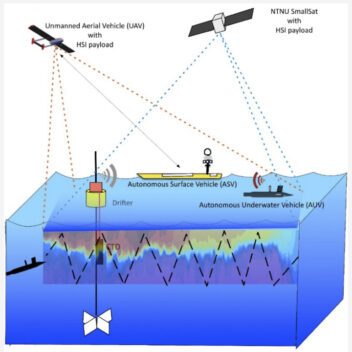
Illustration of the observation pyramid that Amos has developed for monitoring the sea areas in the north. Different technologies observe the ocean from the air, from the sea surface and from underwater. Illustration: Kanna Raja, NTNU
The centre also has 50 postdoctoral fellows, several of whom are now employed as associate professors and professors at NTNU and other universities, and a total of 2000 scientific articles have been published.
“Amos has had big, ambitious goals. The researchers’ work involves technology and knowledge that is highly relevant to Norway, and they have shown how basic research can create value,” says Kjetil Skaugset, Senior Advisor at Equinor.
“Amos represents a watershed. The relevance and importance of the research and innovation carried out at the centre must be seen in light of the current security situation. Ocean areas in the High North are facing threats, both militarily and from a marine biology perspective,” says Skaugset.
Elite sports
The boss of all this, Amos Director and Professor Asgeir J. Sørensen, puts it this way:
“We work according to [football coach] Nils Arne Eggen’s “good-foot” theory: Focus on developing what you are good at,” says Sørensen.
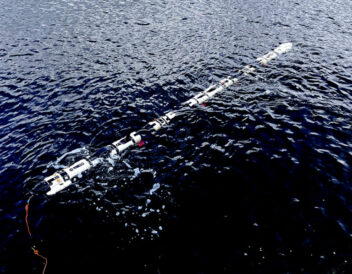
The snake robot Eelume is one of the innovations that is now being commercialized through a spinoff company that originated from Amos. Photo: Live Oftedahl, NTNU
The good-foot theory also includes the principle of interaction and playing to each other’s strengths.
“I’ve been more like a player-coach and we have been guided by three main values: excellent – generous – courageous. A mantra of being interdisciplinary is that we must also be groundbreaking,” says Sørensen.
He also makes it clear that Amos has been working towards ambitious goals.
“We have the best technology developers, and they can be compared to top athletes. For us, it was about creating outstanding results of great significance for science and society based on long-term, strategic research. An important element has been to strengthen innovative research and researcher-driven innovation,” says Sørensen.
In his opinion, the best thing about Amos is all the people the centre has educated.
“These people are agents of change who will help take us forward,” Sørensen said.
- You might also like: Ocean life in 3-D: mapping phytoplankton with a smart AUV
Arrogance is not acceptable
“Working at an interdisciplinary centre at NTNU has given us a huge competitive advantage. Interdisciplinarity demands a lot from each individual, where arrogance and ignorance are simply not acceptable,” says Sørensen, and adds:
“I would also like to emphasise the importance of our collaboration with Equinor, DNV and SINTEF. These kinds of projects give us an insight that enables us to target our work and advance faster with higher quality and relevance.”
It was former rector Torbjørn Digernes who gave Asgeir J. Sørensen the ‘green light’ to develop a research and innovation community based on the new blue economy.
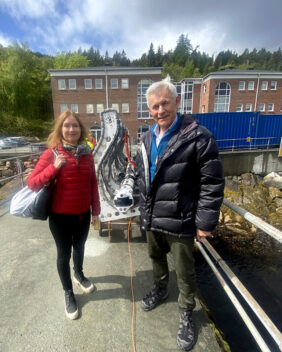
Professor Kristin Y. Pettersen and Dean Olav Bolland in front of Eelume, the snakelike robot that Pettersen has developed. Bolland is Dean of the Faculty of Engineering, which hosts Amos. Photo: Idun Haugan, NTNU
“Over the years, we have had visionary, highly supportive leaders. The fantastic thing about NTNU is that we can specialise in specific fields and be interdisciplinary at the same time,” says Sørensen.
Norway plays an important international role as one of the main actors in the blue economy. More than ever, a holistic and sustainable approach is needed to meet global challenges, value creation and knowledge-based management of the northern regions and oceans.
“Unfortunately, there is not that much room for making mistakes, and we need to make sure that the solutions we launch don’t become part of the problems in the future,” he says.
Sørensen outlined his ambitious goals in an article in the university newspaper when Amos first started ten years ago. These have now all been achieved.
Eight spin-off companies based in Trondheim
The research community has also focused on product development, commercialisation and value creation. Eight spin-off companies have been established during the ten years of operation, all of which are based in Trondheim.
In other words, they are not part of the brain drain to Oslo that Trondheim often experiences with start-up companies. NTNU Technology Transfer (TTO) has played an important role in the process of establishing viable companies. TTO’s work involves the commercialisation of NTNU innovations.
These are the eight companies:
- ScoutDI: An inspection system that uses drones
- Zeabuz: Develops and adapts autonomous vehicle solutions.
- Skarv Technologies: Uses drones to search for lost or abandoned fishing gear and map marine pollution and illegal fishing. This is a support initiative for and by volunteers from the organisations Ghost Diving and Healthy Seas.
- Eelume: Develops snakelike robots used for inspection and repairs on underwater installations.
- Blueye: Develops and manufactures underwater drones that are able to film at depths of 500 metres. The Blueye drone was used to map the damage to the Nord Stream gas pipeline.
- Norwegian Subsea: Develops and manufactures motion sensors for use in ship movement monitoring, hydrography, green energy and oil production.
- SentiSystems: A platform solution for real-time sensor data processing.
- UBIQ Aerospace: A solution to prevent icing on drones and helicopters operating in cold regions.
Quo vadis? Teaching robots to interact under water
These companies are continuing to research these issues, but there’s also research being done at NTNU VISTA CAROS – Centre for Autonomous Operations Subsea – that is an AMOS spin-off.
VISTA is a robotics research centre that aims to increase knowledge about the ocean using underwater drones and robots. It was established in 2020 and is led by Asgeir J. Sørensen.
“Our goal is to develop technology that can reduce the short-term environmental footprint of the offshore industry while also reducing environmental risk. In the long term, the technology could become part of a subsea infrastructure of great importance for monitoring and understanding biology, chemistry, physics and dynamics in the ocean and on the seabed,” says Sørensen.
This is how VISTA is funded
The Norwegian Academy of Science and Letters and Equinor support NTNU with a total of 25 million Norwegian kroner, distributed over five years.
The departments of marine technology and technical cybernetics receive the research funds.
NTNU also contributes with its own financing.
“If we succeed in building digital infrastructure at sea, and also get different robotic systems to interact under water, on the surface of the water and in the air, we will multiply the operational capabilities and revolutionise data capture within ocean mapping and monitoring,” he says.
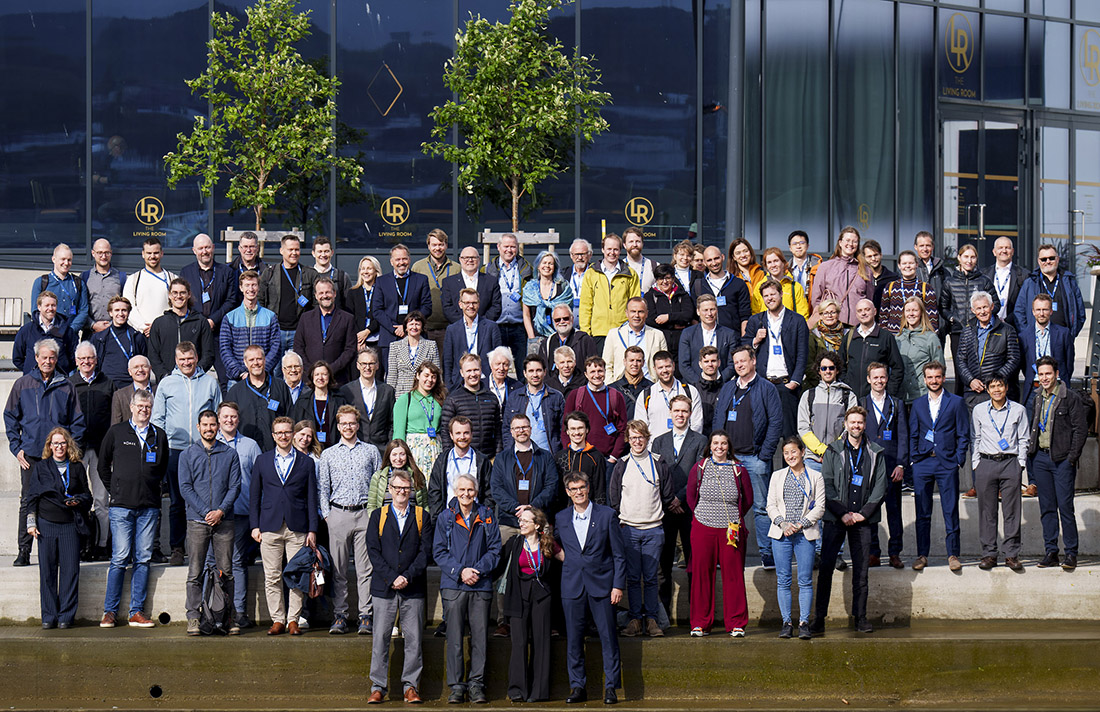
Researchers and PhD candidates from Amos as well as research partners gathered to summarize and plan the way forward. Photo: Ole Martin Wold
References:
Towards contract-based verification for autonomous vessels. Ocean Engineering, January 2023
Coregistration of Hyperspectral Imagery With Photogrammetry for Shallow-Water Mapping. IEEE Transactions on Geoscience and Remote Sensing, March 2023
NTNU Amos Final Report 2013-2023
